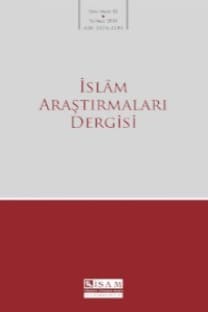Hadis ve Tarih İlimleri Arasında Tefsir Tabakat Literatürü: Histografik Bir İnceleme
Tabakat literatürünün doğuşundaki temel etkenin, hadis tenkidi olduğu kabul edilir. Cerh ve ta‘dîl ilmi geliştikçe, hadislerle birlikte râvilerin biyografileri de nakledilmeye başlanmıştır. Zamanla muhaddis biyografilerinin yanı sıra fakih, kârî, kelâmcı, şair, dilci, sûfî, filozof gibi, ilimlerin hemen her dalıyla uğraşan âlimler hakkında biyografi kitapları yazılmıştır. Böylelikle tabakat literatürü İslâm tarih yazıcılığının önemli bir kolu durumuna gelmiştir. Literatüre eklenen en son halka ise müfessir tabakatları olmuştur. Muhtemelen İslâmî ilimlerin hemen her dalındaki âlimlerin tefsirle yakından ilgilenmesi sebebiyle, diğer alanlardaki çalışmalar erken dönemde böyle bir yazım türüne ihtiyaç bırakmamıştır. İlk müfessir tabakatını Süyûtî kaleme almış, bu türü Dâvûdî, Edirnevî gibi âlimler sürdürmüştür. Çağdaş dönemde literatür, Zehebî ve Cerrahoğlu’nun, Goldziher’in çeşitli İslâmî eğilimleri merkeze alan yöntemine göre yaptıkları tefsir tarihi çalışmalarıyla farklı bir boyut kazanmıştır. Bununla birlikte Ömer Nasuhi Bilmen gibi, tefsirdeki kronolojik sürekliliği esas alarak klasik yöntemi devam ettirenler de olmuştur. Bu çalışmada öncelikle İslam tabakat literatürünün doğuşu ve etkenleri tartışılmakta, daha sonra müfessir tabakat literatürünün diğer ilim dallarına oranla geç ortaya çıkışının sebepleri ve tarihsel seyri incelenmektedir.
Anahtar Kelimeler:
Hadis tenkidi, İslâm biyografi literatürü, müfessir tabakatları, Süyûtî, Goldziher, Ömer Nasuhi Bilmen
The Tabaqāt of Exegetes between the Sciences of Hadith and History: An Historiographical Study
It is commonly accepted that the main factor in the development of the Islamic bio- graphical literature tabaqāt is the criticism of the prophetic sayings ahadith . As the science of disparagement and exoneration ‘ilm al-jarh wa al-ta‘dīl developed, the biographies of transmitters, alongside the ahadith, started to be transmitted. Over the course of time, in addition to biographies of muhaddithūn, biographies of some prominent scholars dealing with different branches of science, such as jurists, reciters, theologians, poets, philologists, Sufis and philosophers were also written. Thus the tabaqāt literature became an important part of Islamic historiography. The last ring of this literary chain was the tabaqāt of exegetes mufassirūn . It was Suyūtī who wrote the first tabaqāt of exegetes, and Dāvūdī and Edirnevī followed him. In the modern period, this literary genre took on a new orientation with Zhahabī’s and Cerrahoglu’s studies on the history of exegesis according to Goldziher’s method, which focuses on different sectarian tendencies in Islam. However, there have also been those who, basing their work on the chronological continuity of the exegesis, preserved the classical method, for example, Ömer Nasuhi Bilmen. In this paper, we first discuss the rise of the tabaqāt literature in general. Next we examine the historical course of the tabaqāt of exegetes in particular and explain the reasons why these came to the scene relatively late
- ISSN: 1301-3289
- Yayın Aralığı: Yılda 2 Sayı
- Başlangıç: 1997
- Yayıncı: TDV İslâm Araştırmaları Merkezi
